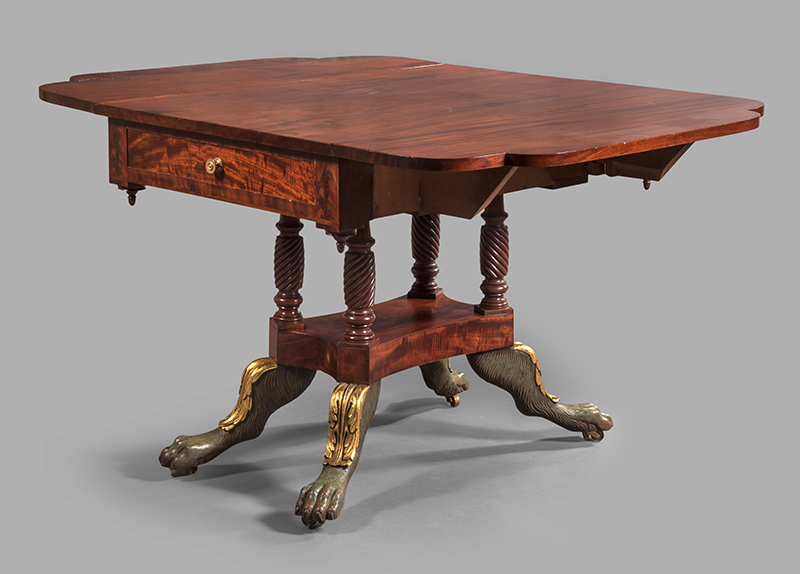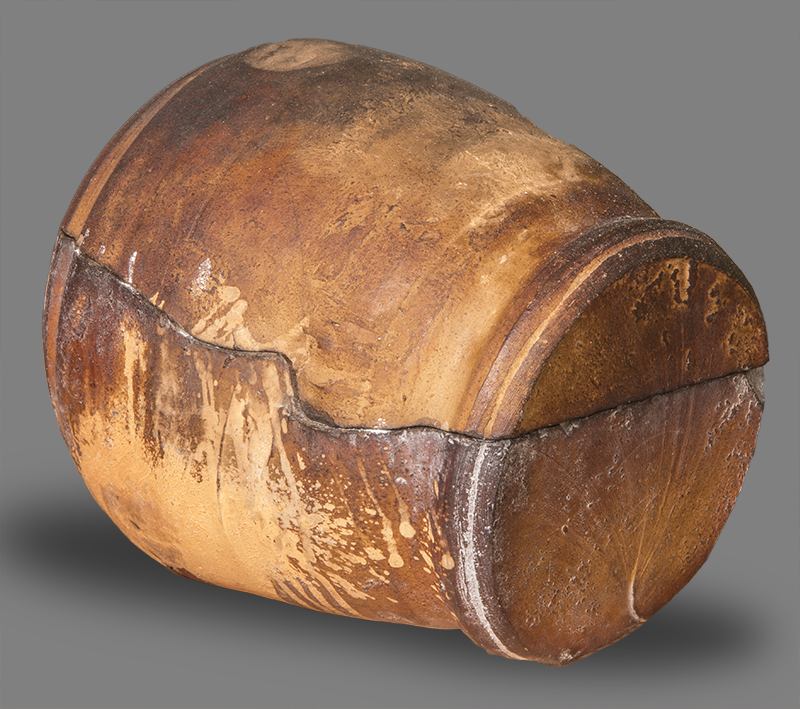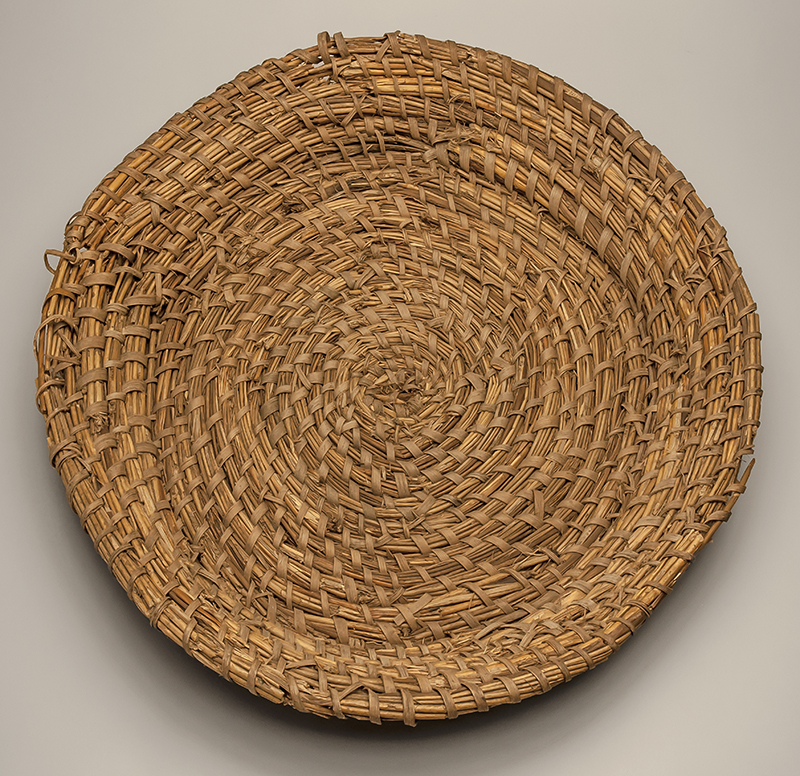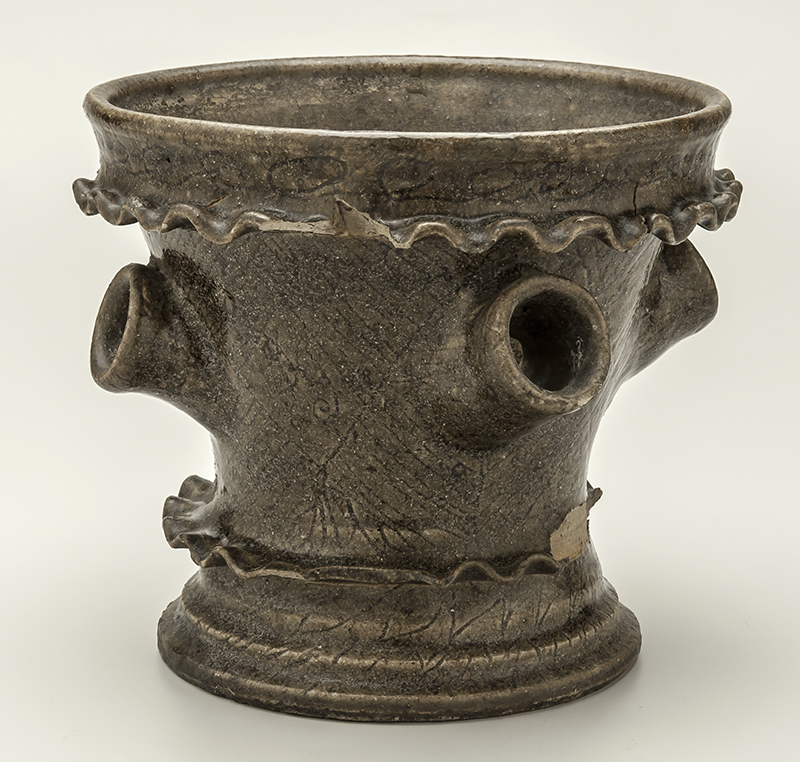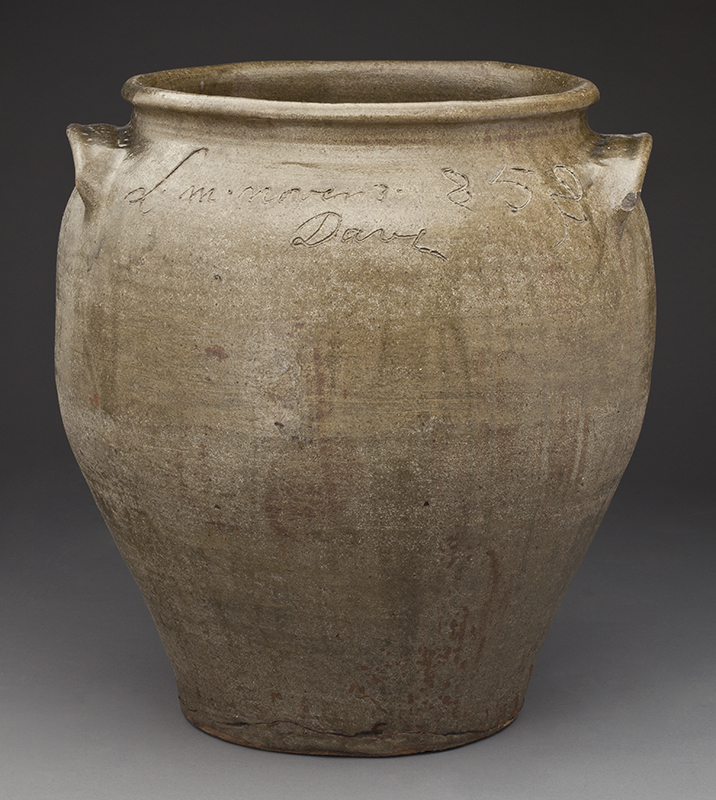MESDA’s Southern Pathways: Visiting Curators Connect Community with Collections
by Daniel Ackermann with Michael J. Bramwell, Simiyha N. J. Garrison, and Robert Hunter
In June 2020, in the still-early days of the COVID-19 pandemic, Old Salem and the Museum of Early Southern Decorative Arts (MESDA) launched the Study South Initiative, a project to highlight our digital resources and connect people with our collections, research materials, publications like the MESDA Journal, and educational programming. We envisioned Study South as a period of intense research and experimentation. As part of the initiative, and with the support of William C. and Susan S. Mariner and the Decorative Arts Trust, we invited three scholars—Michael J. Bramwell, Simiyha N. J. Garrison, and Robert Hunter—to join us as guest curators to help us to take a fresh look at our collection, the people and cultures represented, and the communities we serve today.
I believe that museums, through their collections and research, tell stories about people using objects. Every object has a story to tell, but what stories do we choose to tell? For whom? And why? The central question of the Southern Pathways project was: How can we use our objects to tell a complete, honest, and accurate account of the people—women and men, indigenous and immigrant, enslaved and free—who built the early American South through the study of the objects they made and used? How can we use new tools to think beyond the label?
Our answer was to create the framework for a new interactive gallery guide that will allow our visitors, onsite and online, to explore the collection, to follow their interests, to make their own connections, and to leave with a better understanding of the complexities of the early American South and how those complexities continue to resonate today.
Throughout our work we have been committed to transparency, which is why you can read the final reports from our visiting curators, look at the data from our community survey, access the Southern Pathways tours when they launch, and watch a recording of our March 17 program “Southern Pathways: Old Things in a New Light” on our website at mesda.org/southernpathways.
Below are Michael J. Bramwell, Simiyha N. J. Garrison, and Robert Hunter’s reflections on their experiences as visiting curators and participants in this project.
Michael J. Bramwell
Chapel Hill, NC
Visual artist; PhD candidate, American Studies, UNC Chapel Hill
As a professional visual artist and doctoral candidate in American Studies at the University of North Carolina at Chapel Hill, my responsibilities as a Visiting Curator for the Southern Pathways project at MESDA were to lead the effort to evaluate MESDA and Old Salem’s permanent collection for strengths, weaknesses, and systematic biases, and to develop new curatorial initiatives and interpretive methodologies for their object records.
During my tenure, I was also able to create a new interpretive pathway for experiencing the collection called Soul by Soul: Crafting a Road to Freedom, that tells a dynamic story of how Black, Indigenous, and people of color used decorative arts as a form of resistance and pathway to freedom in the early American South. Among the objects I highlighted in my report was a breakfast table from Norfolk, VA (figure 1). In 1818, James Woodward loaned an enslaved craftsman $120 to purchase his freedom. In return, the craftsman, named James, worked in Woodward’s shop for a year to repay his debt. During that year, he may well have had a hand in the construction of this table. My pathway explores how enslaved men like James used craft as a path to freedom. I also produced a report that includes an evaluation of Old Salem and MESDA’s online collections with recommendations for systemic change.
I was also able to participate in MESDA’s public-facing program THINGS: A Global Conversation with historian Dr. John Sensbach. We discussed the decorative arts of enslavement as a “peculiar aesthetic” and advanced the idea of a new collection category of torture and restraint devices, for example, how a leather whip from the Wachovia Historical Society collection might encourage MESDA to address the decorative arts of torture (figure 2).
MESDA is to be commended for its willingness to engage in important social justice work at this inflection moment in society. The organization is challenging dominant cultural thinking and focusing on equitable practices tied to art acquisitions and representation of art by Black, indigenous, and people of color. The openness and staff support were important elements in the success of this project that will be posted online as a best-practice model for other institutions.
Simiyha N. J. Garrison
Atlanta, GA
MA, Heritage Studies and Public History, University of Minnesota
My Visiting Curatorship focused on two areas: community and visitor research and the creation of a visitor pathway through the collection that explores the intersection between objects, historic foodways, and Old Salem’s Seeds With Stories initiative. It was a joy to work as a community liaison and connect with surrounding organizations on behalf of MESDA. As a recent graduate of a masters program at the University of Minnesota, this was my first official professional position. Although I was trained thoroughly, as a woman, and a woman of color, there are not many of us represented in the museum sector. At times, when I voice my opinion, I feel as though I am expected to speak for all Black women, as if we are just one monolithic race and gender. Having Michael’s support gave me the confidence to speak the truths I hold dear.
A surprising and valuable experience was learning about the politics of museum work. What do staff titles mean versus what they deliver? What influence do curators hold and how much freedom do they have? How can we, as museum professionals, develop best practices in information sharing internally and externally? What does community engagement look like from the institutional standpoint and how can we further destroy barriers that are hindering positive relationship building with broader institutions? One of my ultimate career goals is to use the knowledge and experiences I have gained and put them to use in my hometown of Winston-Salem. I hope that Old Salem and MESDA will continue to offer visiting positions like these as a way to encourage growth in museum professions across the globe.
I deeply enjoyed sharing my pathway research through an installment of THINGS: A Global Conversation at the end of April with culinary historians Jessica B. Harris and Marcie Cohen Ferris. I discussed a 19th-century earthenware chicken roaster made in Salem (figure 3). Dr. Harris spoke about a different kind of food-related pottery: her childhood cookie jar. Objects designed for the preparation and storage of food provide important access to the stories of marginalized communities and allow museums to recognize the labor of both the makers and users of the objects. For example, a mid-19th-century rice fanning basket from Cat Island Plantation in Orangeburg County, SC, was made by a now-unknown enslaved woman and pays tribute to her and her craft skills (figure 4).
Robert Hunter
Williamsburg, VA
Editor, Ceramics in America; Guest Curator, William C. and Susan S. Mariner Southern Ceramics Gallery
I was excited to receive the invitation from the Museum of Early Southern Decorative Arts to participate in the Southern Pathways initiative, and to reexamine the Mariner, MESDA, and Old Salem ceramic collections with fresh eyes considering contemporary issues of race, social inequalities, and diversity. I hoped my background in anthropology sufficiently informed my study and curation of the William C. and Susan S. Mariner Southern Ceramics Gallery as well as other research assignments I had undertaken with the larger MESDA and Old Salem ceramics collections but quickly learned I was wrong.
I have always considered ceramics to be among the most democratic material objects, used by nobility and peasants alike. The story of Southern ceramics likewise can be characterized by diverse stories lines, from 3,000 years of Native American use of indigenous clays to the search for the secrets of porcelain making by British connoisseurs using the “Cherokee clay” of the North Carolina backcountry. Over the last 300 years in the American South, immigrant potters of myriad ethic and religious backgrounds handed down their trade. Throughout, enslaved individuals and communities were exploited by the pottery trade but remain hidden in many of the Southern ceramics narratives. Among the Southern potters we are able to name and acknowledge is Lucius Jordan, a free Black potter who worked in Washington County, GA, in the mid-19th century and often signed his wares with his initials (figure 5).
Despite my training, experience, and perspectives, the greatest benefit of reconsidering the ceramics interpretation has been the collaborative effects of the individuals assembled for this effort. In particular, to opportunity to observe and work with Michael and Simiyha has greatly informed and expanded my own awareness of how the decorative and aesthetic choices of those objects made in the past requires not only an understanding of historical technologies but also inquiry into the social, ethnic, religious, political, and economic context of the makers. For example, David Drake is by far the best-known member of Edgefield’s community of enslaved potters. Through our different pathways, Michael, Simihya, and I each approached his work from different perspectives (figure 6). My steps on the Southern ceramics pathway have taken a new turn, and I hope to benefit immensely from new vistas ahead and working with fellow travelers on this journey.
Daniel Ackermann is the Chief Curator and Director of Collections, Research, and Archaeology at Old Salem Museums and Gardens.
Michael J. Bramwell is a PhD candidate in American Studies at UNC Chapel Hill and a contemporary visual artist.
Simiyha N. J. Garrison holds a Master’s degree in Heritage Studies and Public History from the University of Minnesota.
Robert Hunter is the editor of the Chipstone Foundation’s Ceramics in America and the long-term guest curator of the William C. and Susan S. Mariner Southern Ceramics Gallery.
The Southern Pathways project, including a March 17 virtual program, was supported by William C. and Susan S. Mariner and the Decorative Arts Trust. See mesda.org/southernpathways.
A print version of this article was published in The Magazine of the Decorative Arts Trust, one of our most popular member benefits. Join today!

